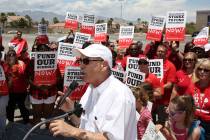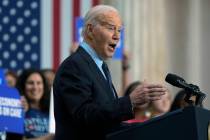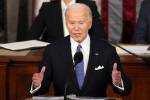‘New normal’
One week after the Obama administration announced that the U.S. economy grew at an anemic 1.2 percent in the second quarter, the president hit a milestone. His busy regulators put the finishing touches on their 600th “major” economic intervention — a rule that imposes more than $100 million in costs on the private sector — since Mr. Obama took office in 2009.
That’s an average of more than one significant new federal directive issued every three days of the Obama presidency, according to the American Action Forum.
Meantime, the president and his advisers seem at a loss to explain why the economy limps along seven years after the Great Recession. They point their fingers at an aging population and other demographic factors to explain the weak growth and even urge working-class Americans to accept an underperforming economy as the “new normal.”
It is against this backdrop that Donald Trump laid out his economic program Monday during an address at the Detroit Economic Club. And at least in terms of tax and regulatory strategy, Mr. Trump offered a clear alternative to the stifling, anti-growth domestic policies that the Obama presidency has so aggressively pursued and imposed.
Mr. Trump seeks to lower taxes across the board, reducing the number of brackets from seven to three and cutting the corporate rate to 15 percent. The intention is to leave more money in the pockets of the men, women and companies that earn it, while jump-starting business investment, spurring innovation and boosting economic growth, the engine that drives federal tax collections, job creation and opportunity for those at all income levels.
In addition, Mr. Trump called for a moratorium on new federal regulations and a rollback of rules that currently hinder private-sector efforts to expand the work force. He also vowed to vigorously pursue the development of our domestic energy resources, which would improve employment prospects for millions of Americans.
At the same time, Hillary Clinton’s approach — a third Obama term, she pledges — promises an even heavier hand than the current president. In order to appease the increasingly powerful collectivist wing of her party, Mrs. Clinton has embraced a soak-the-rich strategy that would make the faithful in Venezuela proud, while also vowing to continue feeding a regulatory state intent on meddling in every imaginable facet of human activity.
Those satisfied with a sputtering economy laboring to expand opportunities for middle-class Americans while operating under the thumb of a smothering federal bureaucracy will no doubt prefer Mrs. Clinton. But for voters who favor policies designed to foster the robust and thriving private sector necessary to promote sustained prosperity and long-term job creation, Mr. Trump’s tax and regulatory agenda offers a more promising way forward.























